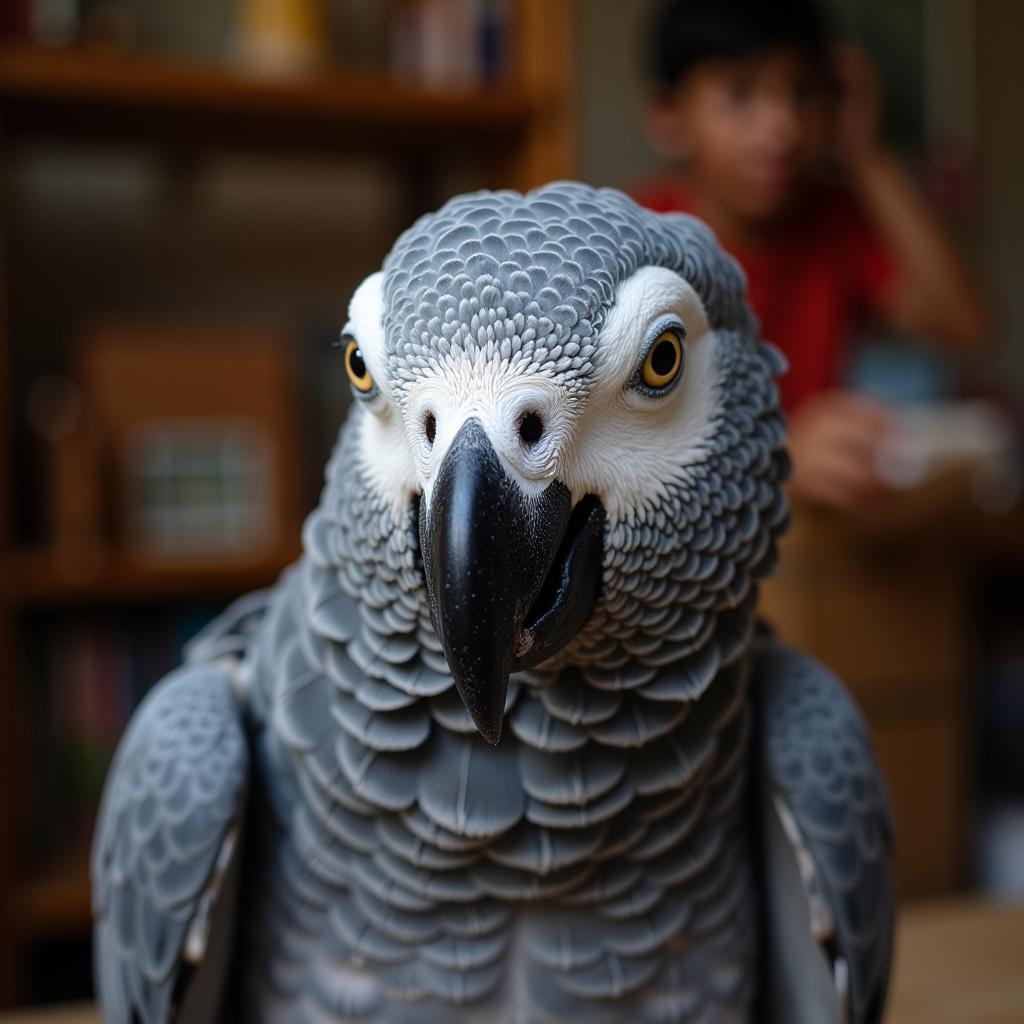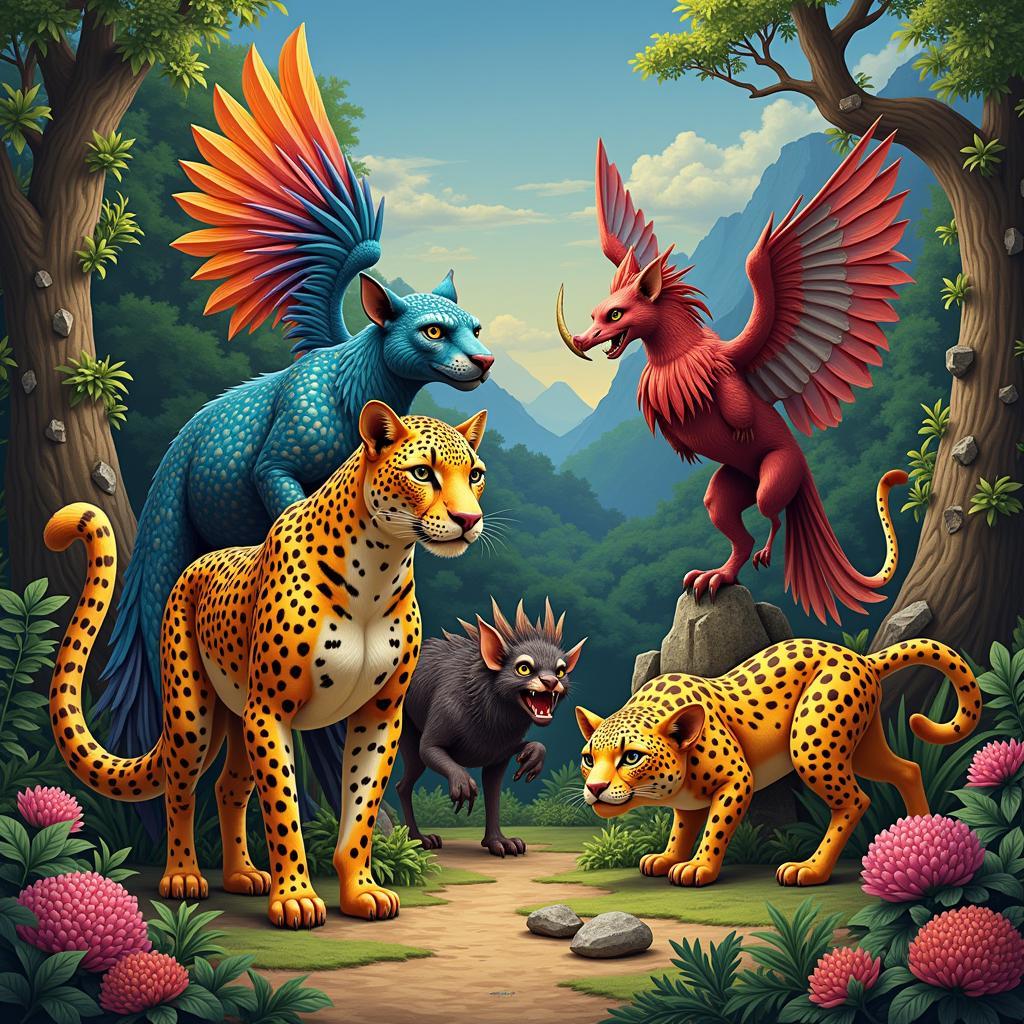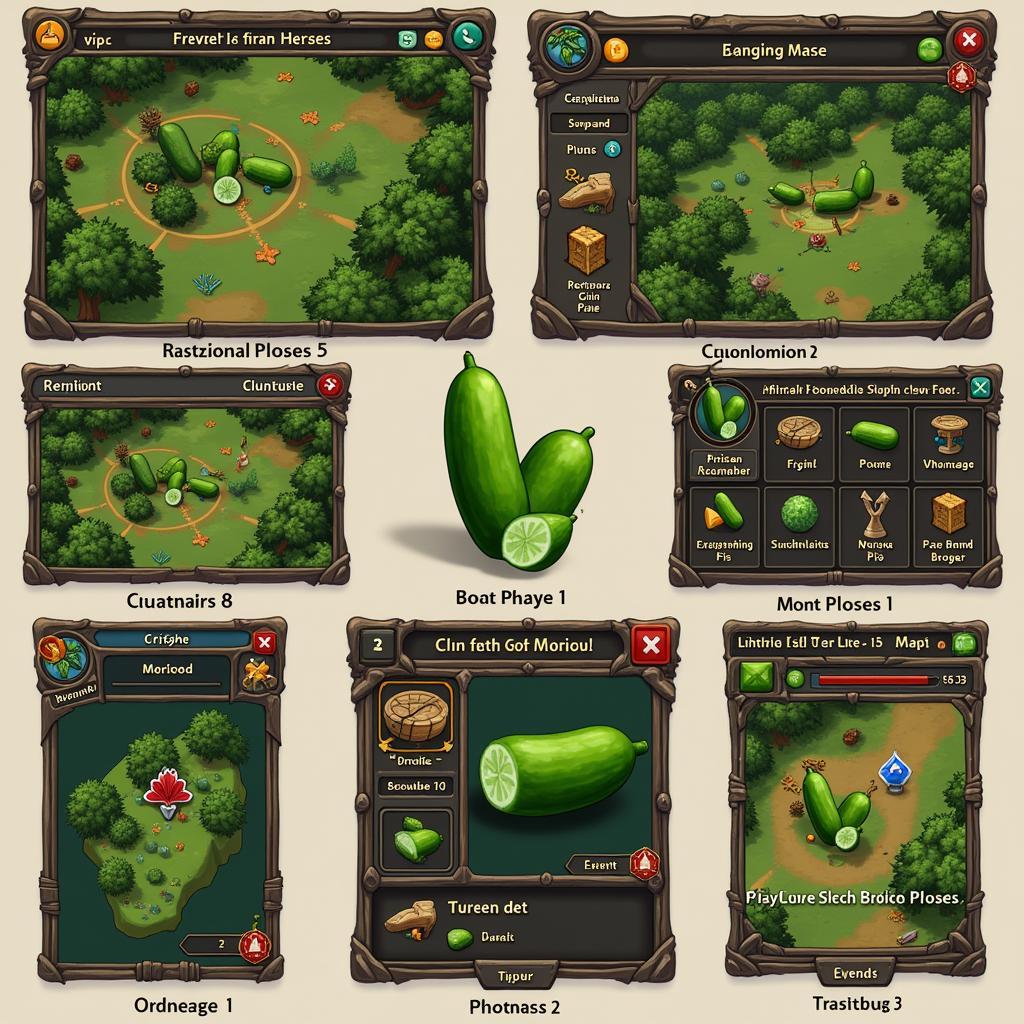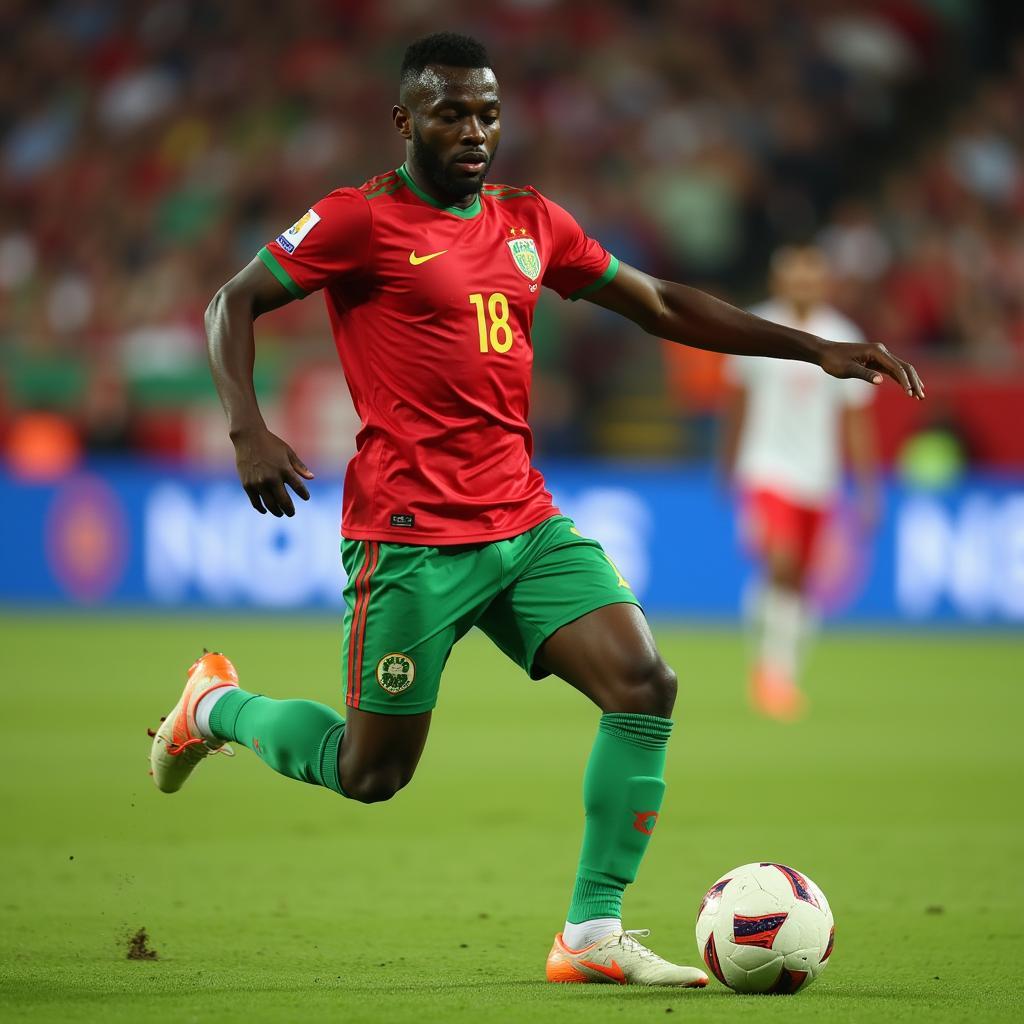African Grey Parrot Dancing: A Rhythmic Revelation
African Grey Parrot Dancing is a captivating phenomenon that showcases the intelligence and adaptability of these remarkable birds. From mimicking human movements to seemingly spontaneous displays of rhythmic bobbing and swaying, their dancing has intrigued bird enthusiasts and scientists alike. Let’s delve into the fascinating world of these feathered dancers.
 African Grey Parrot Showing Off Dance Moves
African Grey Parrot Showing Off Dance Moves
Deciphering the Dance: Why Do African Greys Dance?
Several theories attempt to explain why African grey parrots engage in dancing. One prominent theory suggests that dancing is a form of communication. In the wild, parrots utilize various vocalizations and body language to interact with each other. Dancing might be an extension of this, expressing emotions like excitement, joy, or even courtship. Another theory proposes that dancing is a way for parrots to regulate their emotions, similar to how humans listen to music to improve their mood. Is it a learned behavior or an instinctive one? This question continues to fascinate researchers. Perhaps it’s a combination of both. We know these parrots are highly intelligent and capable of mimicry. They can observe and imitate human actions, including dancing. However, there are instances of African greys seemingly developing their unique dance styles without any explicit training.
 African Grey Parrot Dancing to Music
African Grey Parrot Dancing to Music
The African Grey’s Groove: Types of Parrot Dances
While not as structured as human dance forms, African grey parrot dancing exhibits a variety of styles. Some parrots prefer head bobbing, moving their heads rhythmically to a beat. Others engage in full-body swaying, shifting their weight from one foot to the other while moving their bodies in a fluid motion. Some even combine these movements with wing flapping or foot tapping, creating their own personalized dance routines.
Is Your Parrot Dancing? Recognizing the Signs
How can you tell if your African grey is dancing or simply exhibiting other behaviors? Look for rhythmic and repetitive movements, often accompanied by vocalizations. The parrot might also appear particularly engaged and focused during these moments. If you play music, observe its reactions. Many African greys show a clear preference for certain rhythms or genres of music, moving their bodies in response to the sound.
Encouraging Your Parrot’s Rhythmic Talent
While you can’t force a parrot to dance, you can create an environment that encourages this behavior. Playing music is a great starting point. Experiment with different genres to see what resonates with your parrot. You can also try dancing yourself! Your parrot might be inspired to join in the fun.
The Role of Enrichment in Parrot Dancing
Providing a stimulating and enriching environment is crucial for a parrot’s overall well-being and can also encourage dancing. Offer a variety of toys, perches, and opportunities for social interaction. A happy and engaged parrot is more likely to express itself through various behaviors, including dancing. Dr. Anika Sharma, a renowned avian veterinarian, notes, “A stimulating environment is essential for parrots. It encourages natural behaviors and can contribute to their physical and mental health.”
African Grey Parrot Dancing: More Than Just a Trick
African grey parrot dancing is more than just a cute trick. It provides valuable insights into the complex minds of these intelligent creatures. Their rhythmic movements offer a glimpse into their emotional world, their capacity for learning, and their innate appreciation for music and rhythm. Remember, every parrot is an individual. Some might dance frequently, while others might not show much interest. The key is to provide a supportive and enriching environment where they can express themselves freely.
Professor Charles Mbogo, a leading expert in parrot behavior, states, “The dance of the African Grey is a window into their intelligence. It reveals a capacity for joy, expression, and perhaps even a deeper understanding of rhythm than we previously imagined.” So, the next time you see an African grey parrot dancing, take a moment to appreciate the wonder of this unique and captivating behavior. It’s a testament to the remarkable abilities of these feathered friends and their profound connection to the world around them.
Conclusion
African grey parrot dancing is a fascinating phenomenon, demonstrating the intelligence and expressive nature of these remarkable birds. By understanding the potential reasons behind their dancing and providing a stimulating environment, we can further appreciate the complex lives of these intelligent companions. So, turn up the music and watch your African grey groove!
FAQs
-
Do all African grey parrots dance? Not all African greys dance, and the frequency and style of dancing can vary greatly between individuals.
-
What kind of music do African greys like? Different parrots have different preferences, but many seem to enjoy rhythmic music with a clear beat.
-
Can I teach my African grey to dance? You can’t force a parrot to dance, but you can encourage the behavior by playing music and creating a stimulating environment.
-
Is dancing a sign of happiness in African greys? Dancing can be a sign of happiness or excitement, but it can also be a way for parrots to regulate their emotions or communicate.
-
What should I do if my African grey doesn’t dance? Don’t worry! Not all parrots dance. Just ensure they have a stimulating and enriching environment.
Other questions might include:
- How does an African grey parrot’s dance compare to other parrot species?
- Are there any health benefits associated with parrot dancing?
- Can the type of dance a parrot performs indicate its personality?
Suggested further reading:
- African Grey Parrot Vocalizations and Body Language
- The Importance of Enrichment for Parrot Well-being
- The Cognitive Abilities of African Grey Parrots
When you need support, please contact us by Phone: +255768904061, Email: kaka.mag@gmail.com or visit our address: Mbarali DC Mawindi, Kangaga, Tanzania. We have a 24/7 customer service team.



